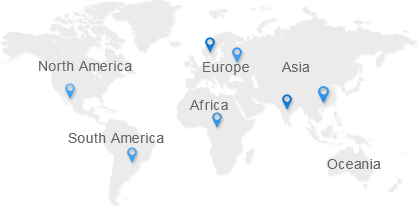5G Spectrum Puzzle:The temptation and challenge of 2.6GHz

Spectrum resources are the core resources for the development of mobile communications. Spectrum planning is the starting point of the industry and determines the industrial development pattern.
In the face of the surging 5G era, spectrum planning and distribution has become the focus of attention in the industry. Unlike most countries, China adopts a distribution rather than an auction to carry out spectrum man agement work. Therefore, the government regulatory authorities are at a very core position in the development of the industry.
According to the industry's general expectations, the Ministry of Industry and Information Technology will clarify the 5G spectrum in Q3 this year; unlike the 3G/4G era, this spectrum allocation will not be issued simultaneously with commercial licenses. Mainly because the 5G standard has not been completely frozen, and the industrial chain does not yet have the scale commercial capability. According to previously disclosed information, 2.6GHz/3.5GHz and 4.9GHz will be the core frequency bands for the 5G pre-deployment.
In other words, the three major operators will “eat” in the above-mentioned frequency bands in the future, and how the spectrum is distributed has become the core of the industry. According to the "Securities Daily" report, the current preliminary plan for 5G spectrum allocation is that China Telecom and China Unicom will each obtain 100MHz spectrum resources of around 3.5GHz, while China Mobile will obtain 100MHz spectrum resources near 2.6GHz.
Of course, this is not the whole story. According to industry sources, China Mobile will also obtain some frequency bands at 4.8 GHz. In addition, the original 2.6 GHz frequency band will also be changed, and new operating entities may enter the 5G spectrum allocation; 5G market structure will undergo major changes. For the three operators, especially China Mobile, what would this spectrum allocation mean? Will it break the current relatively balanced market structure?
There is no optimal solution for 5G spectrum allocation, because there are too many factors to consider, and even some of the demands are contradictory. In my opinion, the above-mentioned programs rumored in the industry may be the most appropriate choice.
Industry concerns
There is a view in the industry that such a spectrum allocation method is to make China Mobile even more powerful.
China Mobile has always been a market leader. Both the scale of its existing network and its investment capacity far exceed China Telecom and China Unicom. If you get a low frequency like 2.6GHz, it will crush competitors in the future.
Moreover, China Mobile has a large number of TD-LTE equipment at 2.6GHz (2575MHz~2635MHz), and it will have a speed advantage in 5G construction. In extreme cases, only the antenna feeder system and the main device need to be upgraded. Massive MIMO can greatly improve the 5G coverage capability, and can fully reuse the 4G site and supporting resources to obtain the advantage of rapid network deployment.
Not short of money, fast action, and very tenacious style, such China Mobile will indeed put a lot of pressure on competitors.
China Mobile challenge
It seems to be taking advantage, but the advantage behind these is the price, and it is the price that China Unicom and China Telecom can't afford.
First of all, the challenges of the industrial chain. Whether it is 2.6GHz or 4.9GHz, the industry chain is very immature from a global perspective. The immature industrial chain means high cost, and consumers have fewer choices, which may repeat the mistakes of TD-SCDMA.
From this perspective, among the three major operators, only China Mobile has the financial resources and the ability to take up the responsibility of cultivating the industrial chain. In contrast, Telecom and China Unicom have received 3.5GHz, which looks like a high frequency (compared to 2.6GHz), but it is the most mainstream 5G frequency band in the world. It has the advantage of a large scale and cost in terms of industrial chain robustness.
Second, the technical level of the challenge. Although 2.6GHz has the feasibility of outdoor continuous coverage, its uplink coverage is limited by terminal capability and power, and the uplink coverage is weak. The uplink coverage differs by 4 dB from 1800 MHz, and is more than 10 dB from 800 MHz. Of course, 3.5GHz also has such problems, so the industry has proposed an uplink and downlink decoupling scheme.
In addition, as mentioned above, the 2.6 GHz band is widely used in TD-LTE networks. If it is used to deploy 5G networks after re-cultivation, it is necessary to carry out 4G/5G hybrid networking, in view of the maturity and networking of the industry chain. The complexity needs to be carefully considered.
Third, at 2.6 GHz, China Unicom (2555MHz~2575MHz) and China Telecom (2635MHz~2655MHz) also have some frequency bands. In the year, for the original intention of developing TD-LTE, the three major operators were allocated TDD spectrum. Now, how to use these spectrums and whether to allocate them again needs to be considered. In this 40MHz spectrum, China Telecom and China Unicom are not betting.
Author: Yue Ming Source from: C114






